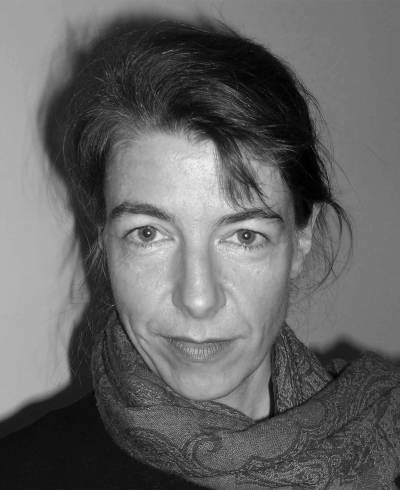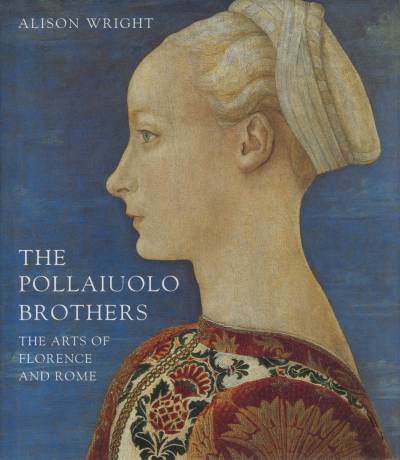Profile

Alison Wright is Professor in Italian Art c. 1300-1550. She joined the Department in 1993, after a BA and PhD at the Courtauld Institute of Art, and a fellowship at the Metropolitan Museum of Art. Her overarching book project at the time resulted in The Pollaiuolo Brothers: the Arts of Florence and Rome, 2005 and she has co-authored collected conference papers on Tuscan art and patronage and collaborated on the National Gallery exhibition Renaissance Florence: The Art of the 1470s. She curated Nameless: Anonymous Drawings of 15t- and 16th-Century Italy in 2010 and has since published on the rhetoric of the sculpted pedestal in Renaissance Italy, on sacrament tabernacles and on low relief sculpture, visibility and the sacred body. Her most recent book Frame Work: Honour and Ornament in Italian Renaissance Art (2019) investigates the visual and ideological work of Renaissance framing in the context of ritual and across media. Her current research, addressing changing aesthetic and material economies of gold in Renaissance art, continues to engage with issues of artistic practice, representation and power this time as part of a larger project on transformations of gold in western culture.
Contact Details
Office: B01, 20 Gordon Square
Office hours: Mondays 12-1pm online and Thursday 1-2pm in person or online - book here
+44 (0)20 3108 4028 (internal 54028)
Email: alison.wright@ucl.ac.uk
Appointment
Professor in Italian Art c. 1300-1550
Dept of History of Art
Faculty of S&HS
Research Themes
Italian painting, sculpture and drawing/ design from the 14th to the earlier 16th century, focusing on artistic practice, functions, patronage, questions of ideology and reception.
Research
Research Summary
Alison's thesis focussed on paintings by the Florentine workshop of Antonio and Piero del Pollaiuolo, a research area which broadened to encompass sculpture, painting, goldsmith work and the common ground of disegno in the later Quattrocento; this work culminated in The Pollaiuolo Brothers: The Arts of Florence and Rome, published by Yale University Press in 2005. Her interest in the relation between the production of Florentine art and patterns of patronage is reflected in the co-edited book With and Without the Medici: Studies in Tuscan Art and Patronage 1434-1530 of 1998. The exhibition which she worked on in 1999-2000 at the National Gallery was accompanied by a book, co-authored with Patricia Rubin, Renaissance Florence: the Art of the 1470s. Articles have focussed on issues in design/drawing, portraiture and relief sculpture, both actual and depicted. Her current book project, Honour and Ornament: Acts of Framing in Italian Renaissance Art addresses significant changes in framing elements (ornamenti) in painting, sculpture and manuscript illumination of the later 15th to earlier 16th century focussing particularly on pedestals, cloths of honour and relief frames, to show how they articulate, differentiate and complicate political, spiritual and artistic hierarchies. She has recently published on touch and the low relief mode in the religious image-making of Desiderio da Settignano and on sacrament tabernacles. She is currently developing a research project around transformations of gold and the values of goldness, especially re-thinking gold's radically changing role in Renaissance representation but also in the visual economies of sculpture, architecture and textiles. The project engages with issues of perception, trade, ethics, alchemy, and making in the Early Modern period but is also driven by the dialogue with contemporary artistic practice around the gold surface.
Publications
Research Publications
Biography
Alison Wright was an undergraduate at the Courtauld Institute of Art where she also completed her doctorate in 1992.
She spent 6 months as a Chester Dale Fellow at the Metropolitan Museum of Art in New York working on the idea and practice of the 'maestro di disegno' in fifteenth-century Florence and then held a British Academy Postdoctoral Fellowship until joining the History of Art Department at UCL in 1993. A year's Fellowship at Villa I Tatti in 1996-7 allowed her to undertake further research on bronze sculpture and goldsmith work that was later incorporated into her major monograph on the work of the Pollaiuolo brothers in all media (Yale University Press, 2005). Alison's exhibition work includes the co-organisation and accompanying catalogues of the National Gallery exhibition 'Renaissance Florence: the Art of the 1470s' in 1999-2000 and 'Nameless: Anonymous Drawings of 15tth and 16th century Italy' at the Moray Art Centre, Findhorn in 2010 drawing principally on the collections of the British Museum and Courtauld Institute of Art. Beyond UCL Alison lectures regularly at the V&A Museum and the National Gallery, London and internationally. She has served on the Warburg Institute Advisory Council and is on the Board of Directors of the Burlington Magazine.
Teaching & Supervision
Alison Wright is currently supervising theses on 15th- and 16th-century art, especially central Italian, in ritual and patronal contexts, on sculpture and on framing. She welcomes doctoral proposals in the field of Italian art in all media in relation to social, political and religious issues and especially where concerned with material process and ideological function.
Current PhD students:
Alison Harpur: Visual Culture and the Council of Ferrara-Florence (1438-1445)
Marina Rovelli: The arts of metal in Renaissance Milan
Completed PhD students:
Thalia Allington-Wood: Grounded: Unearthing the Materiality of Sculpture and Mythic Space in Sixteenth-Century Italy
Andrew Murray: The Weepers on the tombs of the Valois Dukes of Burgundy
Harriet O'Neill: Renaissance and Neo-Renaissance Frames and framing at the National Gallery London (joint supervision of Collaborative Doctoral Award)
Nathanael Price: Legends of Graven Images: A new historical perspective on Jewish visual culture in the Italian Renaissance
Nathaniel Silver: Francesco di Stefano called Il Pesellino: the Artistic Identity of a Renaissance Painter
 Close
Close


